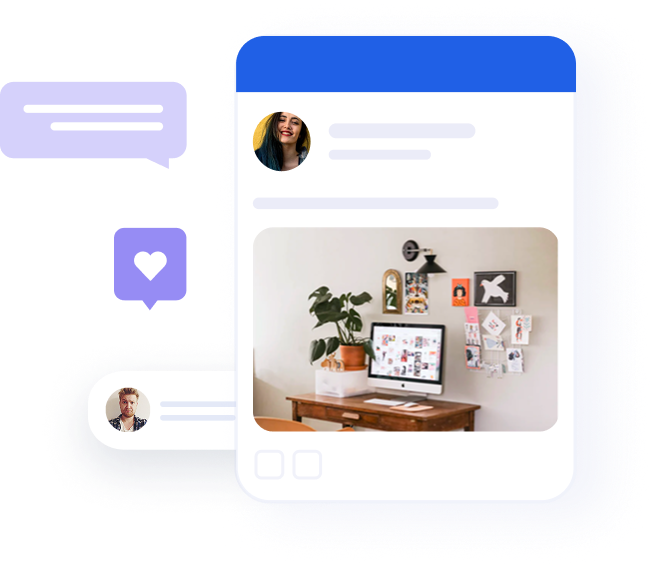
8 steps to success with manufacturing marketing
Table of contents
If I asked you to think back on your last meaningful purchase, there’s a very high chance that online research was involved in your process.
When you think of it the buying journey of 2020 is not the same as 2010, and definitely not the same as pre 2000. The 2020 buyer journey is an online journey. In fact, the whole concept of “buyer journey” has become commonplace because of the complexity of online purchasing and research.
This is the main reason that brands and marketers spend huge sums of money on digital promotion.
Now, as a B2B marketer, you might be quick to point out that, sure, a lot has changed. But, that’s consumers not B2B. Well, according to Google, more than half (52%) of all B2B purchases in 2019 were influenced by digital content and marketing. Moreover, nearly half of B2B buyers used web searches in their process to seek information before making a purchase.
Now, once more, if you are in manufacturing, you’re probably thinking: “Ok, but that’s for b2b software buyers – of course, that’s online. What about manufacturing?!”
82% of manufacturing companies who invested in digital marketing have reported increased success in 2018, and almost half of all manufacturing marketing predict that social media will be critical to their inbound marketing success.
There is no doubt that in 2020, digital marketing is critical to maintaining and developing relationships with B2B buyers. However, that is not the only reason manufacturing brands should adopt digital marketing.
Why do manufacturing companies need digital marketing?
You have plenty of customers and a steady revenue stream. Your brand is well known and respected. Perhaps you are even one of the lucky manufacturers seeing growth in today’s competitive market. Why should you suddenly start spending time, money, and effort in digital marketing for your manufacturing company? “Everyone is doing it” is hardly a good enough reason to invest in digital marketing if the ROI isn’t high enough to justify it.
It helps to start with a simple definition of what digital marketing is exactly.
Digital marketing is the aspect of marketing that involves the use of various digital and internet-based technologies to promote products and/or services. Digital marketing activities traditionally include components like websites, newsletters, social media pages, and other online lead acquisition and nurturing tactics.
Mass-manufacturing is a highly competitive business in today’s interconnected and ever-expanding global marketplace. Manufacturers don’t only have to worry about competition from local companies. It’s the cheap products (and labor) from the East that are the main cause of concern.
Digital marketing is one of your only competitive advantages in the global manufacturing arena. Simply because you speak the local buyers’ language, and your digital marketing strategy is based on an in-depth understanding of their needs. An understanding enabled by digital marketing tools.

The role of digital marketing in driving sales and business growth is obvious. More customers means more sales, which means more profits. However, non-sales business activities should not be discounted either.
For example, having a solid online presence and positive brand sentiment are critical in recruiting manufacturing professionals. Yes, job seekers, much like buyers, research potential employers online. Ensuring that they find the relevant information about your business is part of digital marketing.
Finally, and most importantly, digital marketing is generally an ROI-positive channel. It is probably the most cost-effective way to engage a large chunk of your target audience and introduce them to your brand, solutions, products, and team. If your audience is there, and we’ve already established that they are, you just need to find the right way to reach them. It may not be easy or simple, but it is necessary for your company’s growth.
8 steps to success with manufacturing marketing
Digital marketing can be a daunting topic, full of industry lingo and TLAs. It’s no wonder, then, that so many traditional manufacturers stay away from online marketing techniques. Events, industry magazines, and a good reputation have been your marketing strategy for years. Is digital marketing for manufacturers really that complex?!
The answer is no. Digital marketing enables the automation of many lead-nurturing activities. That means less copying and pasting of cold-call sales emails and more information you can gather from prospective buyers in less time.
To simplify it even further, we have broken down the process into 8 steps. Whether you already have a traditional marketing strategy or are looking to venture into the online world with a new brand message, the process is nearly identical.
1. Set goals
You must be very clear in setting expectations for your marketing efforts. This isn’t as simple as “increase sales” or “grow our customer base”. It might be hard to put a number on the expected business growth, but it’s worth trying based on past experience with promotional activities. It’s also worth remembering that B2B sales cycles can be long, so consider where and when your digital marketing efforts fit best in the funnel.
2. Define your audience
This is one of your major starting points. You must fully understand the people you’re selling to, not simply as a target market/audience. Beyond their role in the buyer organization, there is plenty you need to know and can influence your marketing. This includes job title, company size, region, key stakeholders they come in contact with, place in the “buying committee”,and day-to-day difficulties (you can later write content to help solve these difficulties).
More importantly, you need to pinpoint what business problem they are trying to solve, and what is preventing them from solving it.

All this comes down to constructing your buyer personas – pseudo-realistic representations of your ideal customer (or customers). It is worthwhile to construct buyer personas for each organization’s different decision-makers involved in the buying process. This information will help you construct a data-driven digital marketing strategy.
3. Create a website that generates leads
Your website needs to be more than just a business card. If you have a website that looks like something from a time capsule, it’s time to bring it up to speed. Though you don’t necessarily need to invest in a fancy and pricey website, it should be informative and easy to navigate. Most importantly, you need a website that will maximize lead generation.
Make sure you are getting the most out of user activity tracking on your website, and set relevant metrics on your site’s performance. Your CRM already stores the information coming from your current customers, but in lead generation it’s about your potential customers and how they interact with your online presence. Analyzing that data can give your invaluable insights on what drives the buyers you wish to attract.
4. Establish a presence on relevant channels
One of the most useful ways to use digital marketing to your advantage as a manufacturer is to solidify your position as a market leader online. Social media platforms like Facebook and LinkedIn are a major aspect of this, but not the only ones. Content marketing is one of the leading strategies for B2B today. Blogs, podcasts, or even YouTube videos can help grow the chances a potential buyer will contact you to ask you for a quote.
In addition, platforms like Quora, G2Crowd and Capterra have gained popularity with B2B buyers for the quality reviews and credibility of the community. Active participation on review websites and relevant social channels can solidify your brand’s reputation and potentially generate leads.
5. Create engaging content and collect leads
A presence online is nothing without content. As you know, the majority of B2B buyers make use of the Internet to conduct their research. For you, this is an opportunity to give them something relevant to read. Not only are you showing your audience you understand them with current and insightful content, but you further solidify your position as a knowledgeable leader in your field.
This content can be used to generate leads in the form of email addresses in newsletters, follows on social media, etc. This way, you can continue to provide your prospects with content detailing your offering.
Creating engaging content that resonates with and engages your audience, while at the same time tickles Google’s search algorithms just right can be a difficult task. However, one advantage you have going for you is that not many manufacturers are creating content for online lead generation. You have a chance to capture leads without too much investment of resources. It would be crazy not to do it.
6. Collect and analyze potential lead data
The data you collect in the lead generation process is a valuable asset. Using it to your advantage can help grow your business. Along the way, your prospects teach you a lot about your website, content and sales funnel. Understanding how different activities perform and what channels bring in qualified leads can help optimize your marketing strategy over time.
7. Run hyper-targeted campaigns
It’s time to take the plunge. The next step is taking the puzzle pieces you’ve collected and turning them into a polished and hyper-focused digital marketing campaign. One of the most important things here is to keep a careful eye on your metrics.
As the campaigns are executed, try to see which aspects of the strategy are paying off dividends, and which are less worth the effort going forward. Most importantly, you can see how accurate you were in identifying your relevant channels, and determine which ones perform best for you. While this is not a simple one-off and will take a bit of data collection and patience, the payoff will be well worth it.
8. Synchronize marketing efforts with sales teams
Implementing a digital marketing strategy involves several stages, but none matter without collaboration between marketing and sales teams.
Marketing needs to make sure they are supporting the sales team in their efforts and campaigns. At the same time, the sales team needs to make sure they align their efforts with the strategies and goals of the business. With everyone pulling in the same direction, the teams will be able to work synergistically and deliver better results.
This is where an employee advocacy program can pay great dividends for everyone involved.
Recommended for further reading
Digitally Manufactured Success
Rome was not built in a day, and your fully developed digital strategy will not be as quick to design and implement.
If you’d like more tips and insights into driving successful marketing for manufacturing, catch our latest conversation with Chris Peer, author of The Great 8 Pillars of ROI-Driven Marketing for Manufacturing, on the Radically Transparent podcast.
Getting started might seem difficult, but with the above simple and straightforward steps you can begin to capitalize on digital marketing. Perhaps even sooner than other manufacturers in your field.




